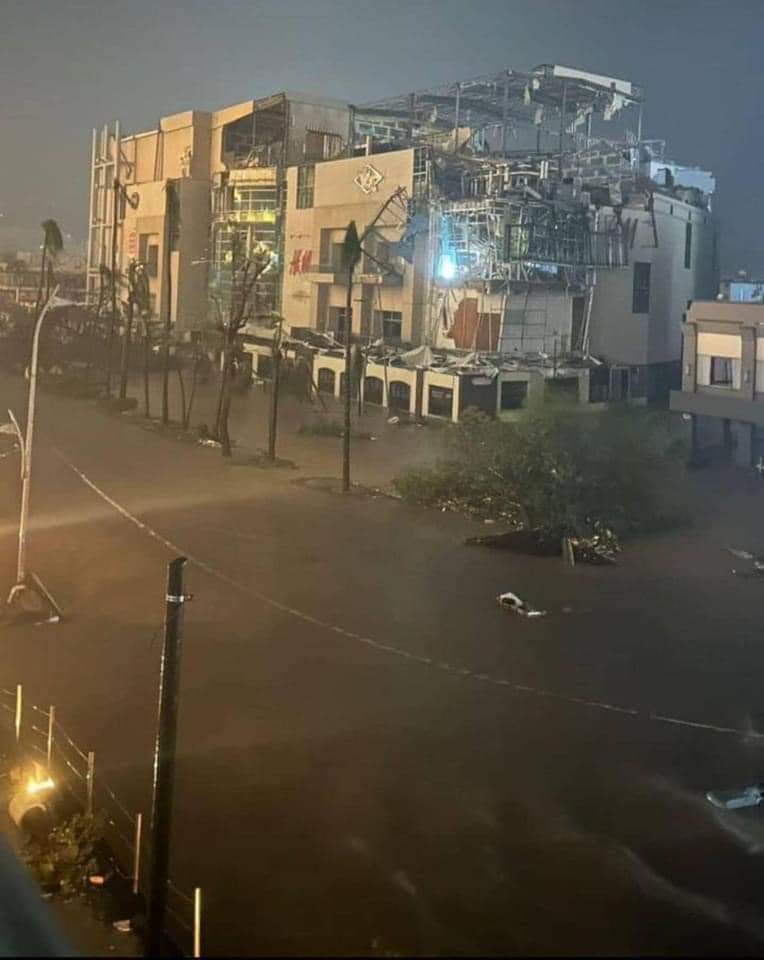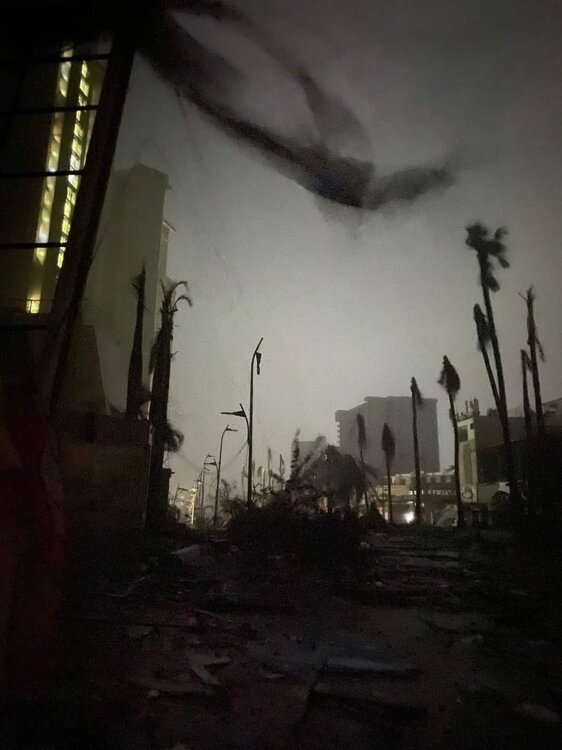Holy crap, this is nearly unprecedented, as Otis was a tropical storm at 11 am EDT Tuesday morning with 70 mph winds and was forecast to strengthen to maybe 85-90 mph winds by landfall around 2:30 am this morning. No models had the storm going beyond Cat 2, but as I've said many times, hurricane intensity forecasts are often fairly inaccurate and storms often surprise us - but not to this extent. By 5 pm yesterday Otis was up to 125 mph and by 11 pm the storm was up to 160 mph and made landfall as a 165 mph Cat 5 storm about 5 miles SE of Acapulco.
I can only imagine the damage, especially given very little notice for people in that area of Mexico. Acapulco was at least spared the worst of the surge, being to the "left"/west of the storm's center, but areas 5-20 miles SE of the city likely saw catastrophic surge and winds, but wind damage was reportedly severe in the city with power out to nearly all of the 1MM people who live there. I'm sure we'll see more reports today. This will be Exhibit 356 on why people in the path of a tropical storm/hurricane ought to be prepared and/or evacuate (or be able to evacuate quickly if the forecast changes like this one).
https://www.wunderground.com/article/news/weather/news/2023-10-25-hurricane-otis-mexico-live-updates
BULLETIN
Hurricane Otis Intermediate Advisory Number 12A
NWS National Hurricane Center Miami FL EP182023
100 AM CDT Wed Oct 25 2023
...EYE OF CATEGORY 5 HURRICANE OTIS ABOUT TO MAKE LANDFALL NEAR
ACAPULCO MEXICO...
...CATASTROPHIC DAMAGE LIKELY WHERE THE CORE MOVES ONSHORE...
SUMMARY OF 100 AM CDT...0600 UTC...INFORMATION
----------------------------------------------
LOCATION...16.7N 99.8W
ABOUT 15 MI...25 KM SSE OF ACAPULCO MEXICO
MAXIMUM SUSTAINED WINDS...165 MPH...270 KM/H
PRESENT MOVEMENT...NNW OR 345 DEGREES AT 10 MPH...17 KM/H
MINIMUM CENTRAL PRESSURE...923 MB...27.26 INCHES
I can only imagine the damage, especially given very little notice for people in that area of Mexico. Acapulco was at least spared the worst of the surge, being to the "left"/west of the storm's center, but areas 5-20 miles SE of the city likely saw catastrophic surge and winds, but wind damage was reportedly severe in the city with power out to nearly all of the 1MM people who live there. I'm sure we'll see more reports today. This will be Exhibit 356 on why people in the path of a tropical storm/hurricane ought to be prepared and/or evacuate (or be able to evacuate quickly if the forecast changes like this one).
https://www.wunderground.com/article/news/weather/news/2023-10-25-hurricane-otis-mexico-live-updates
BULLETIN
Hurricane Otis Intermediate Advisory Number 12A
NWS National Hurricane Center Miami FL EP182023
100 AM CDT Wed Oct 25 2023
...EYE OF CATEGORY 5 HURRICANE OTIS ABOUT TO MAKE LANDFALL NEAR
ACAPULCO MEXICO...
...CATASTROPHIC DAMAGE LIKELY WHERE THE CORE MOVES ONSHORE...
SUMMARY OF 100 AM CDT...0600 UTC...INFORMATION
----------------------------------------------
LOCATION...16.7N 99.8W
ABOUT 15 MI...25 KM SSE OF ACAPULCO MEXICO
MAXIMUM SUSTAINED WINDS...165 MPH...270 KM/H
PRESENT MOVEMENT...NNW OR 345 DEGREES AT 10 MPH...17 KM/H
MINIMUM CENTRAL PRESSURE...923 MB...27.26 INCHES





